Superposition
![]()
Quantum particles exist in multiple states simultaneously until measured.

At first glance, quantum mechanics might seem strange or even impossible. That’s because our everyday experiences of the laws of physics are very different from how matter and energy behave at the atomic and subatomic level.
“Two things can be at the same time; things appear to jump through walls. The deeper we dig into the nature of reality, we find that it is very complicated and bizarre and far removed from our day- to-day experiences,” says Prem Kumar, professor of electrical and computer engineering and director of the Center for Photonic Communication and Computing at Northwestern. “In the words of Arthur C. Clarke, ‘any sufficiently advanced technology is indistinguishable from magic.’”
But quantum mechanics underlies the structure and origin of our universe and is even central to much of our technology. It explains nuclear fusion and governs how a solar panel converts sunlight to electricity.
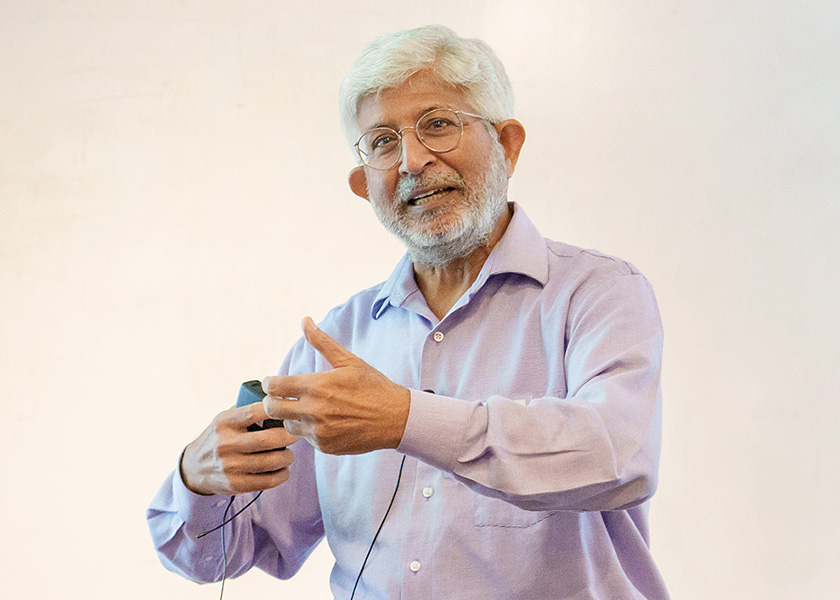
When scientists began to understand the strange quantum phenomena of superposition, measurement, and entanglement, it paved the way for technologies such as lasers, MRI scanners, transistors, and semiconductor devices.
Scientists and engineers are now at the beginning of the next revolution in quantum computing, sensing, and communication. Work in quantum 2.0 could help solve currently insurmountable challenges in cryptography, drug discovery, information technology, optimization, and transportation and logistics.
Northwestern Engineering faculty in computer science, electrical engineering, computer engineering, and materials science are working alongside teams in chemistry and physics at Northwestern’s Weinberg College of Arts and Sciences to leverage the unique behaviors of quantum particles to build more efficient, powerful, and sustainable technologies.
![]()
Quantum particles exist in multiple states simultaneously until measured.
![]()
Quantum measurements reveal the probabilistic nature of quantum mechanics, meaning that individual measurement outcomes have a degree of randomness that empowers the quantum systems to take multiple destinies until measured. Once measured, the state of a quantum system “collapses” and becomes part of the classical reality.
![]()
The interaction of particles such that their physical properties—like momentum, position, or polarization—are interdependent regardless of distance. Such interdependency leads to a level of correlation unseen in any classical system.
![]()
The fundamental unit of quantum information in two-dimensional quantum systems. Unlike classical bits, which can only be a single binary value of 0 or 1, a qubit can represent both states simultaneously with some probability.
While quantum computers promise exponential processing power over classical computers, current quantum computers do not have enough quantum bits (qubits, the basic building blocks of quantum computers) to perform difficult computational tasks.
Still, researchers are looking for other ways to boost quantum computing. “It turns out that one way to improve computation and effectively increase the number of quantum transistors working together is to connect these computers via fiber networks—the same way that we now use cloud computation or distributed computing,” says Mahdi Hosseini, associate professor of electrical and computer engineering.
These fiber networks are already used in classical communications, where a pulse of light carries binary information encoded as zeroes and ones, enabling the transmission of telecommunications signals through optical fibers.
Hosseini and Kumar are developing the next generation of fiber-based quantum networks, integrating quantum information into the existing classical fiber infrastructure to reap the exponential computational power and security of quantum communications.
Through the Advanced Quantum Networks for Science Discovery (AQNET) project, Kumar will demonstrate the feasibility of this classical-quantum symbiosis via Fermi National Accelerator Laboratory’s Chicagoland quantum network, which connects Northwestern, Fermilab, Argonne National Laboratory, and the University of Illinois Urbana-Champaign.
Kumar will also build on his early work in quantum frequency conversion to help develop a quantum repeater demonstrator for Argonne’s InterQnet project. Like an optical amplifier in classical communications, the repeater would boost quantum communication distances in fiber networks by enabling quantum interference of photons distinguishable by wavelength or color but made identical through the process of quantum frequency conversion.
One advantage of quantum communication is its reliance on quantum phenomena such as superposition (where a qubit is in different states simultaneously until measured) and entanglement (where the quantum states of qubits are connected, no matter how far apart they are). Both help make quantum communications ultra secure: hacking, amplifying, or copying information is virtually impossible.
But this also makes quantum information difficult to control and store.

“Quantum information is very fragile. We cannot store it into a typical hard drive,” Hosseini says. “And quantum mechanics forbids knowing what is stored. As soon as we look at quantum information and measure it, the quantum nature of information is destroyed.”
In collaboration with the US Department of Energy’s Oak Ridge National Laboratory Quantum-Accelerated Internet Testbed project, Hosseini’s research group is developing a building block for the future long-distance quantum network called quantum optical memory—a device designed to store quantum information carried by photons. Driven by practicality, the lab uses machine learning to optimize quantum storage at the telecom wavelength that can operate at temperatures achievable with tabletop refrigerators.
Atomic quantum memory technology, Hosseini explains, will enable a fundamentally secure quantum network guaranteed by the laws of quantum mechanics.
To bring quantum technology out of the controlled research lab into a noisy world, Hosseini is leveraging the University’s strength in materials science. In a study with materials scientists including Professors Michael Bedzyk and Mark Hersam, Hosseini applied a novel quantum thermoreflective imaging technique to perform a precise imaging of heat on microwires and superconductor materials.
This advancement in quantum thermal imaging can enable the study of microscopic phenomena within classical and quantum materials— an innovation of interest to James Rondinelli, who investigates structure–property relationships to design next-generation, multifunctional inorganic materials.
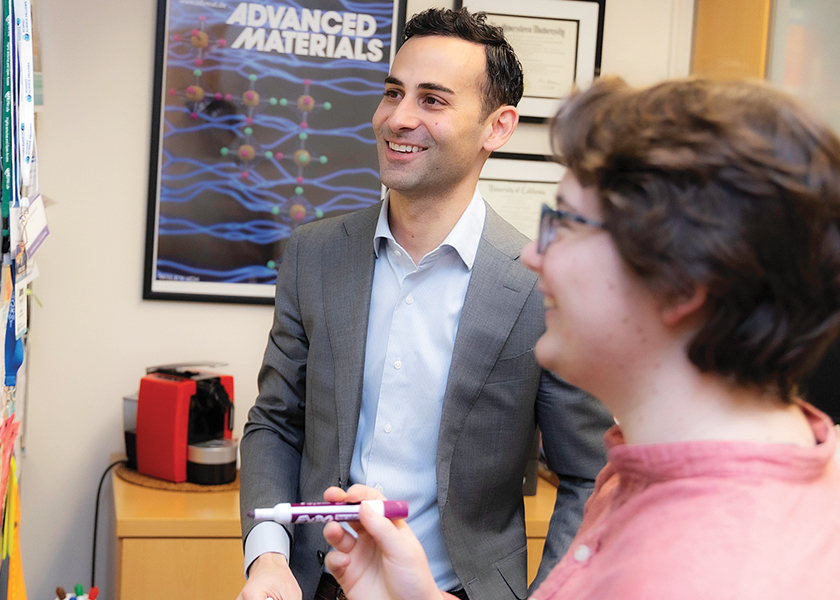
Applying an atom-by-atom design approach with quantum mechanical simulations and collaborative experimentation, Rondinelli’s Materials Theory and Design Group recently developed a new material: Ca3Co3O8. This oxide compound blurs the traditional distinctions between metals, polar materials, and magnets, combining intrinsically contradictory properties and paving the way for exciting functionalities in electronics and spintronics.
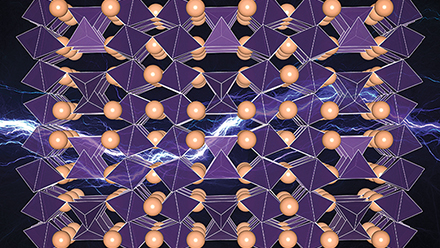
“This achievement opens the door to a frontier of unique quantum phenomena never before seen in classical systems and conventional metals,” says Rondinelli, Walter Dill Scott Professor of Materials Science and Engineering.
Rondinelli’s team is also modeling a subclass of polar metals called topological semimetals to address the interconnect bottleneck for further downscaling integrated circuits for microelectronics. Interconnects, traditionally copper, are the metal wires that connect billions of transistors in computer chips at the nanometer scale.
“As you shrink copper, it becomes so resistive that it no longer acts like a metal and consequently consumes more energy,” Rondinelli says. “But in a topological semimetal, the current is carried via electronic states on the surface of the material. So thinner is better. The surface states are topologically protected and cannot be destroyed through scaling effects.”
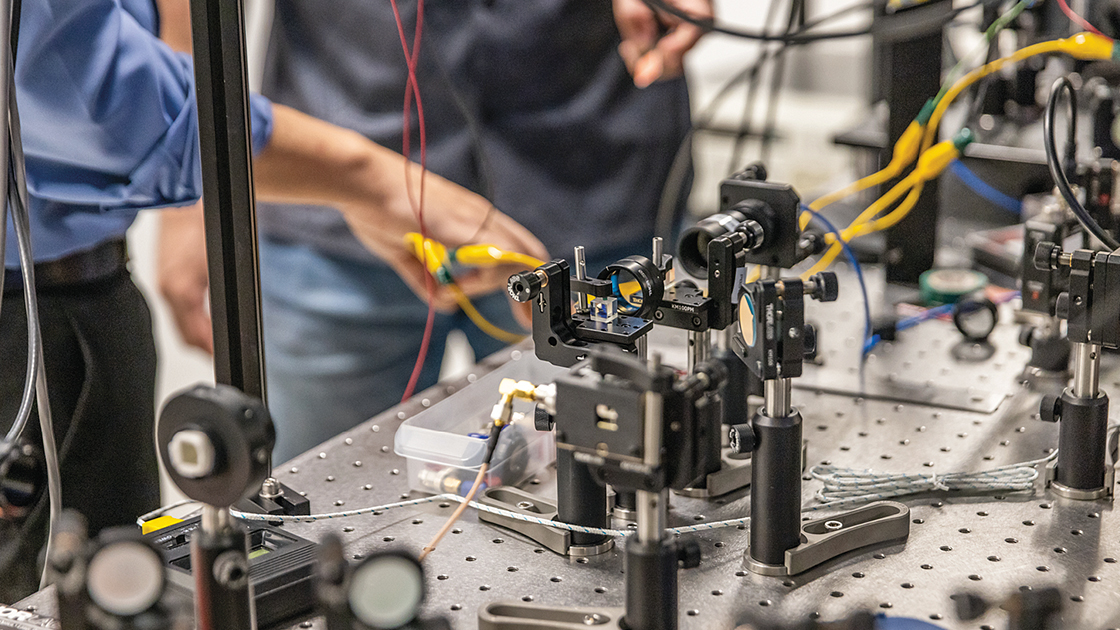
Caffeine, a popular energy booster, is composed of 24 atoms. To describe all possible arrangements of the compound’s subatomic particles would require 10 to the 48 (1e+48) bits, a staggeringly unfeasible amount of data to process even on today’s most powerful supercomputer, says Kate Smith, assistant professor of computer science.
While there's a lot that you can borrow from classical computing to build out the quantum software stack, there's a lot of other things that have to be completely redefined. Assistant Professor of Computer Science
Smith studies quantum software and applies her work to supporting better-performing quantum computing systems. By applying quantum mechanical properties, quantum computers are theorized to enable applications in chemistry, cryptography, drug discovery, financial forecasting, machine learning, optimization, space exploration, and weather and climate modeling.
Smith is exploring how to build abstraction layers—interfaces that make it easier to describe and manipulate a quantum system—for quantum computation that are intuitive and would allow researchers to map their unanswered questions to implementations that reach solutions quantumly.
“This is a challenging problem,” Smith says. “While there’s a lot that you can borrow from classical computing to build out the quantum software stack, there's a lot of other things that have to be completely redefined.”
Pedram Khalili’s Physical Electronics Research Laboratory integrates traditional semiconductor technologies with quantum materials to build energy-efficient computers that can solve sophisticated problems.
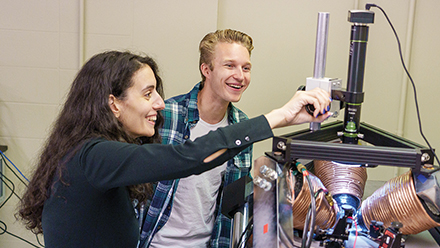
In one study, Khalili, AT&T Research Professor in the McCormick School of Engineering and professor of electrical and computer engineering, designed complementary metal-oxide-semiconductor probabilistic computing chips capable of solving complex optimization problems in concert with the magnetic random-access memory (MRAM) devices that Khalili pioneered. MRAM offers better speed and energy efficiency than existing semiconductor memories.
Through the US National Science Foundation’s Future of Semiconductors program, Khalili leads a multi-institution team of researchers that aims to develop probabilistic computers based on antiferromagnetic tunnel junctions. This new class of spintronic devices—resilient to magnetic fields and ionizing radiation—may provide even higher speeds and bit densities than existing MRAM devices.
Khalili’s approach is to use physics—classical or quantum—in a way suited to the particular computing problem at hand, a paradigm he refers to as “unconventional computing.”
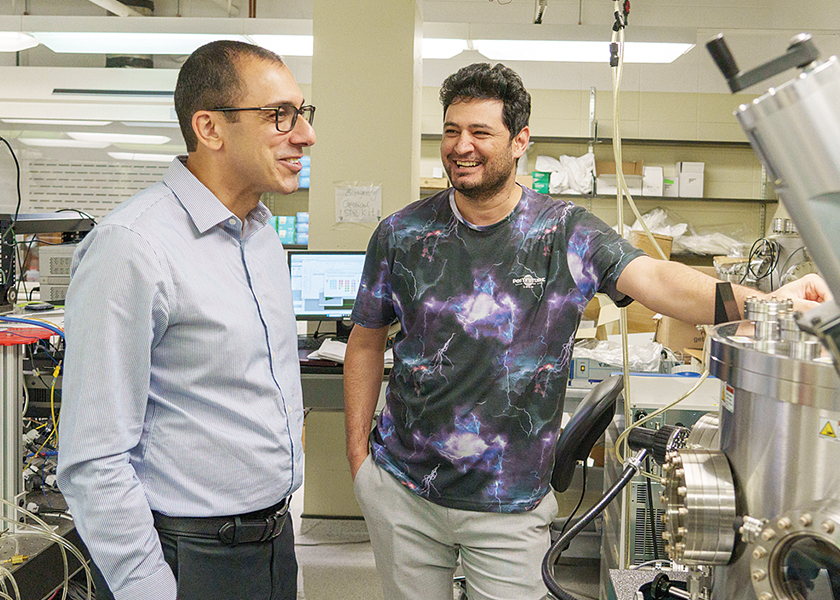
“Our probabilistic computers utilize physics to solve hard optimization problems, which has important sustainability implications for a wide range of industries,” Khalili says. “In the long run, we’ll see a more domain-specific mix of quantum, unconventional, and classical computing technologies. This will enable the computing industry to overcome its current sustainability roadblock—which is the most important reason all of this work needs to be done—by innovating exciting new types of hardware and associated algorithms.”
Realizing the potential of quantum technology requires connecting a multidisciplinary research community and training the next generation of engineers and scientists.
![]()
In March, Northwestern hosted a plenary meeting for nearly 150 members of the Quantum Economic Development Consortium to learn, network, and identify collaboration opportunities. Northwestern Engineering’s Hani Mahmassani presented on the potential to use quantum computing for transportation and logistics, while Professors Prem Kumar and Nivedita Arora led a session exploring how quantum technologies can enhance sustainability.
![]()
Professor Mahdi Hosseini leads the Innovation in Quantum Pedagogy, Application and its Relation to Culture (IQ-PARC) project, funded by the US Department of Defense National Defense Education Program. In August, Northwestern hosted the IQ-PARC Undergraduate Quantum Summer School aimed at sharing knowledge of quantum concepts and technologies through lectures and hands-on activities for underrepresented students across the country.
![]()
This fall, Professor Prem Kumar attended an U.S.-India initiative on Critical and Emerging Technology workshop on post-quantum cryptography at the University of California, Los Angeles, chaired by officials from the White House Office of Science and Technology Policy and U.S. Department of State. Subsequently, Kumar hosted eight technical experts representing the Government of India’s National Quantum Mission. The delegation toured Kumar’s lab and other quantum facilities at Northwestern.